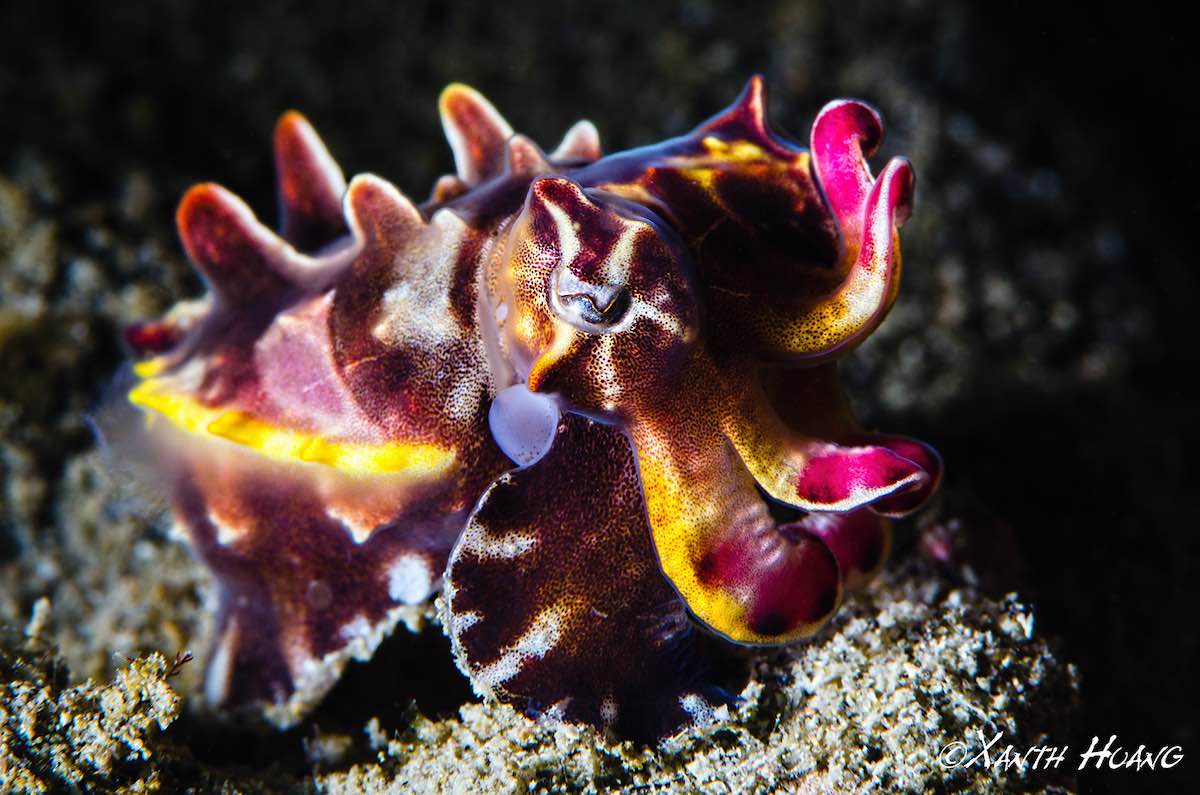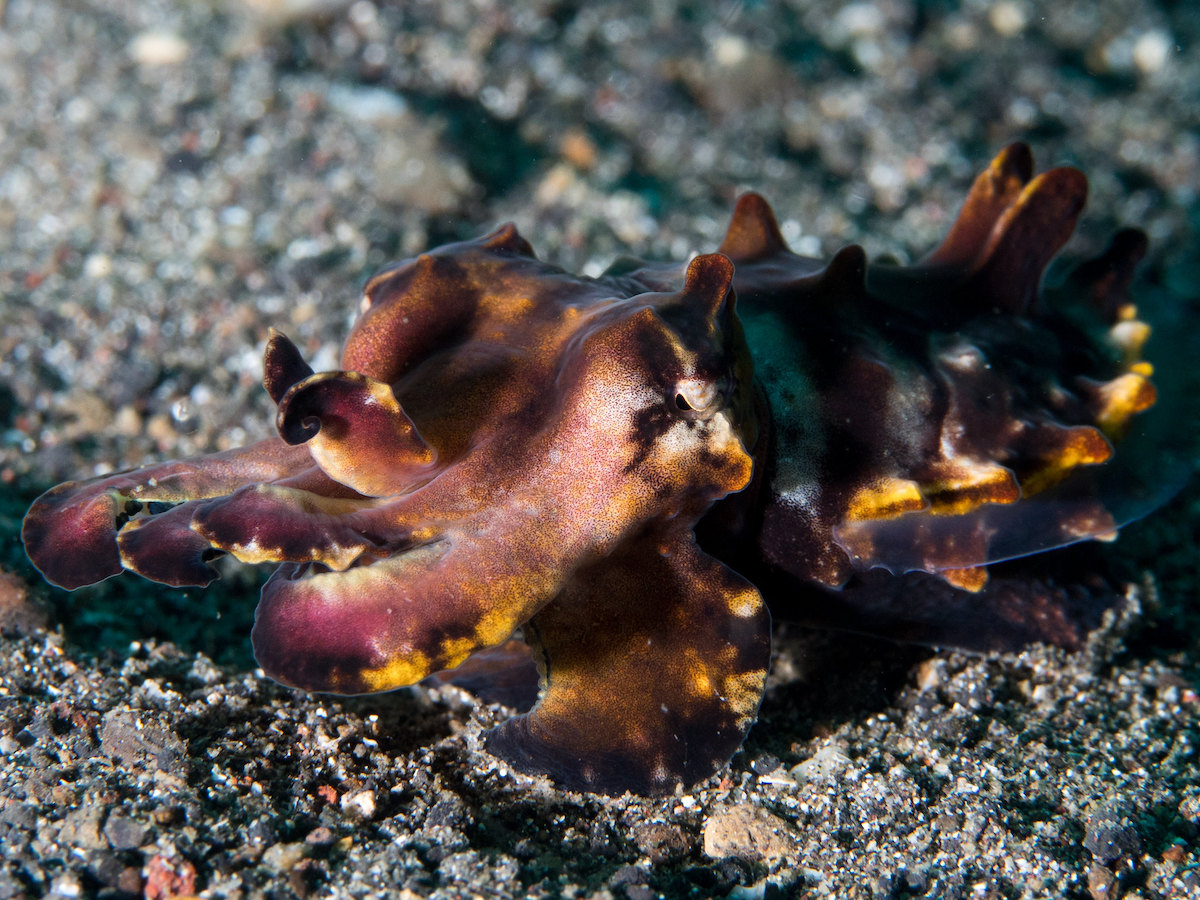An Ode to the Flamboyant Cuttlefish
These colorful, captivating cephalopods will steal your heart.

Cephalopods are some of the most impressive invertebrates in the sea. Members of class Cephalopoda, which includes squid, cuttlefish, octopuses and nautiluses, have captivated humans for centuries—and for good reason! The group includes the massive colossal squid, the inventive mimic octopus, the historic nautilus, the venomous blue ringed octopus and more.
But today, in honor of Cephalopod Week, we want to take a moment to acknowledge one particular cephalopod who doesn’t always get the attention it deserves. This captivating, colorful creature is hard to find, so many are unaware of how wonderful it truly is.
Today, we celebrate the flamboyant cuttlefish.
Native to sandy habitats in the Indo-Pacific Ocean, flamboyant cuttlefish (Metasepia pfefferi) only reach three inches in size. They’re on the small size for cuttlefish—for comparison, cuttlefish generally reach about six to ten inches. They feed on small crustaceans like crabs and shrimp and even small fish.
The first thing you notice about the flamboyant cuttlefish is its coloring. Monterey Bay Aquarium calls them “perpetual color machines”, and their mix of pink, yellow, brown and orange colors is, well, flamboyant. Despite their unique coloring, they’re remarkably well-camouflaged for their environment, making it easy for people (or predators) to pass them by.

Unlike many of its relatives, the flamboyant cuttlefish prefers to “walk” along the seafloor rather than swim. It uses two arms and fins to make leg-like appendages to quietly creep across the seafloor. This behavior, called ambling, is only seen in one other cephalopod—the paintpot cuttlefish.
The flamboyant cuttlefish exhibits an unusual behavior if it feels threatened. Rather than swim away, it flashes an undulating color show intended to startle or hypnotize its predators (picture black bands rippling down its body). Many species use bright coloring to warm predators that they’re poisonous, and the flamboyant cuttlefish is no exception.
Flamboyant cuttlefish also use this flashy behavior to impress potential mates. Males will find a sheltered den and wait for a female to express interest in mating. Once a female decides to mate, the two enter the den and the male uses a species appendage to fertilize the female. The female lays her eggs one by one and attaches them to the roof of the cave and dies shortly after.
These critters might not be the largest, fastest or even the flashiest cephalopods out there. But their tiny, colorful, ambling-selves deserved to be recognized! So this Cephalopod Week, join us in toasting the one and only flamboyant cuttlefish.
We’re sharing our favorite cephalopods all week long. Follow us on Twitter, Instagram and Facebook to see more, and share your favorite cephalopods using #CephalopodWeek.
